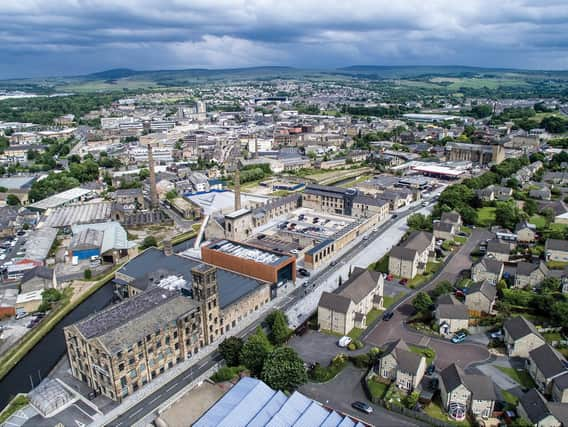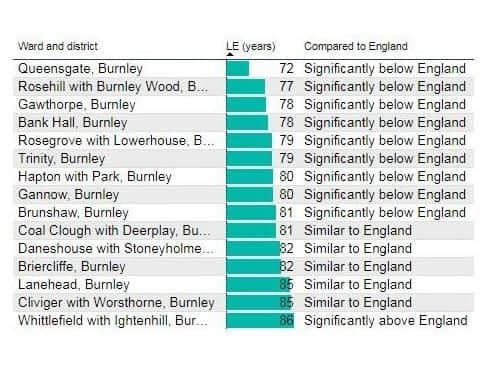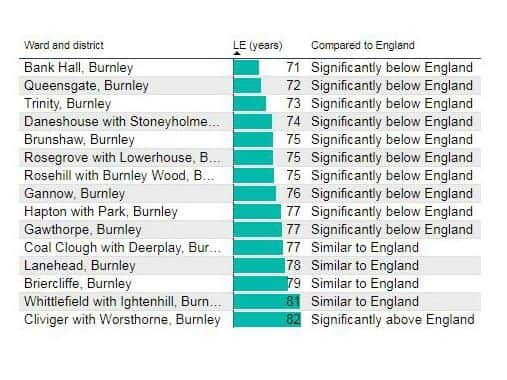Shocking Burnley life expectancy figures highlight need for action


The shocking Lancashire County Council ‘Neighbourhood Intelligence’ statistics show a huge disparity in how long somebody can expect to live in wards separated by nothing more than a short car journey.
The ward with the highest life expectancy is Ightenhill where women can expect to live until they are 86. However, down the road in Queensgate – two miles away – women live until they are 72.1.
Advertisement
Hide AdAdvertisement
Hide AdFor men, Cliviger has the highest life expectantly with a figure of 82 years. By contrast, the figure in Bank Hall is 71.


Coun. Sue Graham, who represents the Queensgate Ward, said: “Ward members and the Executive are very aware of the life expectancy figures for Queensgate and Burnley as a whole.
“We work closely with our partners such as Burnley Leisure to improve the health and wellbeing of residents.
“The GetInTo initiatives that Burnley Leisure run have programmes specifically geared to suit women and some of these are delivered at Prairie Sports Village which is in Queensgate Ward.”
Advertisement
Hide AdAdvertisement
Hide AdIt is startling revelation and one that takes on even more serious connotations when viewed countywide.


Burnley has one of the lowest life-span expectancies in Lancashire; men falling two years short of the county average of 78.7 and women 1.7 years under the 82.2 average. Both these regional figures are below the national average.
Men and women in Pendle and the Ribble Valley can also expect to live longer than their Burnley neighbours with women in Pendle living until they are 81.5 years old and those in the Ribble Valley expected to reach 82.9. Men in the Ribble Valley meanwhile have a life expectancy of 81.8 while in Pendle it’s 78.1.
Coun. Lian Pate, Executive member for Community and Leisure Services, said: “Whilst Burnley Council doesn’t have any direct responsibility to health services, we are still committed to being involved with those organisations that do.
Advertisement
Hide AdAdvertisement
Hide Ad“We recognise that there is a direct link between health and wellbeing and the environment that people live in. We will continue to seek investment in housing renewal and environmental improvements.


“We are looking to work with partners to ensure the town has the best ‘joined up’ approach we can get. The newly formed Burnley Health and Wellbeing Partnership is working on bringing together partners for more robust ways of working, and in turn feeds back to the East Lancashire Health and Wellbeing Board.
“There are also the new Primary Care Networks being established which will see GP Surgeries working to support each other and deliver targeted initiatives. The first of these will cover the Burnley East area, including Queensgate.”
Burnley MP Julie Cooper added: “These figures relating to the life expectancy rates in Burnley and Padiham are deeply shocking but are not surprising. There is a direct correlation between levels of deprivation and life expectancy.
Advertisement
Hide AdAdvertisement
Hide Ad“Across the constituency as a whole this equates to a gap of 8.1 years for men and 9.9 years for women. It is a fact that poverty shortens lives and the way to address this scandalous state of affairs is to tackle the causes of poverty.
“Sadly the Government is in denial and their failure to tackle such issues as low pay, poor housing and fuel poverty is making the situation worse.”